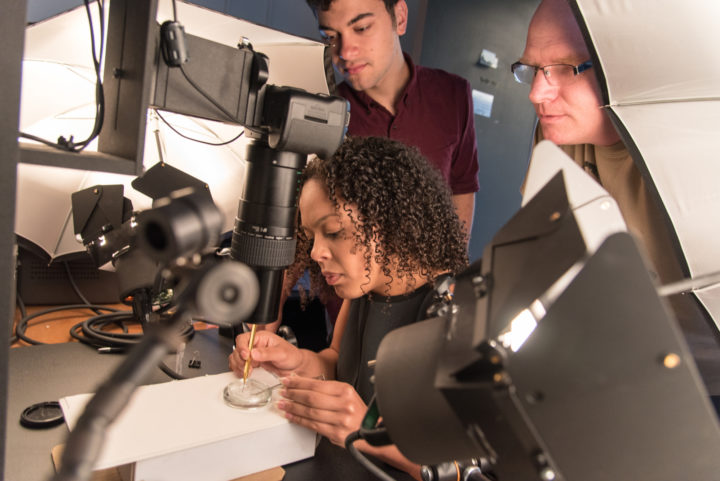26th September 2017: Smiley Faced Spiders
Published on 26th September 2017
A scientist at the University of Vermont and four of his undergraduate students have discovered 15 new species of “smiley-faced” spiders—and named them after, among others, David Attenborough, Barack Obama, Michelle Obama, Leonardo DiCaprio, and Vermont Senator Bernie Sanders.
This was an undergraduate research project. In naming these spiders, the students and I wanted to honour people who stood up for both human rights and warned about climate change—leaders and artists who promoted sensible approaches for a better world.

Until now, the beautiful yellow “smiley-faced spiders” in the genus Spintharus—named for a smiley face pattern on their abdomens—has been thought to have one widespread species “from northern North America down to northern Brazil,” Agnarsson says.
However, when a research team from the Caribbean Biogeography Project (CarBio)—spearheaded by Agnarsson and Greta Binford at Lewis & Clark College—examined spiders from Jamaica, Cuba, the Dominican Republic, Puerto Rico, the Lesser Antilles, Florida, South Carolina, Costa Rica, Mexico, and Colombia—they discovered that one widespread species was actually many endemic species. Using CarBio genetic work, and the Vermont students’ painstaking photography and lab work, the team—with support from the National Science Foundation—was able to identify and formally describe fifteen new species. “And if we keep looking, we’re sure there are more,” Agnarsson said.
Conservation concerns
The Caribbean region has long been known to scientists as a major global hotspot for biological diversity. The leading spider expert on the Spintharus genus in earlier decades, Herbert W Levi (1921–2014), had concluded that differences he observed in these spiders across a wide swath of geography represented variation within one species. But newer molecular techniques deployed by the project’s leaders, Agnarsson and Binford, show otherwise. “These are cryptic species,” Agnarsson says. “As Dr Levi’s work clearly showed, they are hard to tell apart by looking at them.” But the DNA data are clear: these spiders have not been interbreeding—exchanging genes—for millions of years.




The study was published September 26 in the Zoological Journal of the Linnean Society. [LINK TO 10.1093/zoolinnean/zlx056]
Media contact: Joshua Brown, University of Vermont
